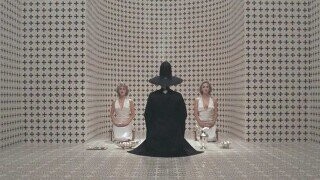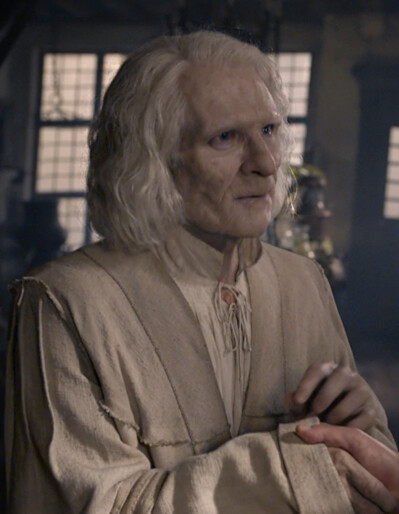The Cracked Guide To Cult Movies: El Topo and The Holy Mountain

This is the latest installment of The Cracked Guide to Cult Movies – check out our previous entries on The Rocky Horror Picture Show, Pink Flamingos, and Phantom of the Paradise.
Welcome, weary traveler, to my humble roadside inn. Our fire is a-cracklin’ merrily, and in the corner is a fool in motley dressed. Might I interest you in a cup of barley-broth? Mine goodly wife did wash a parsnip in it, but tell not the Church of such decadent flavors!
Don't Miss
I’m not sure where this bit is going or even where it came from, but you’ve worked enough this week, time to coast. So we’re going to be talking about the films of Alejandro Jodorowsky with a specific focus on El Topo (1970) and The Holy Mountain (1973). These movies are deeply weird, and at times even disturbing, but you made it through Pink Flamingos so I think you’ll be fine.
So What’re These Movies About?
That's a very good question! To be honest, it’d kind of be doing these films a disservice to break them down to the level of plot beats. Symbolism and visuals play a big role in both of them, and to just read about them without experiencing the dream state of actually watching them on film makes them seem like a disjointed series of images made by a dude who got so high on PCP he forgot he exists. I’ll keep this portion brief.
So suffice it to say that El Topo is widely considered the film that created that Acid Western or Weird Western genre. It’s the story of a gunslinging cowboy (the eponymous El Topo) on a quest to achieve enlightenment, which he does the American way: by finding masters of philosophy and shooting them. I think it’s a film about the tarotic journey of The Fool as he learns and is reborn as The World, except he’s got a cool gun. There might also be a little Nietzschean ubermensch Thus Spake Zarathustra philosophy about transcending the received moral principles of religions? And did I mention he’s got a sweet gun?
The Holy Mountain, often considered a kind of pseudo-sequel to El Topo, is fairly often paired with it as a double feature. It is a beautiful, visually sumptuous film. Even if you find the story and themes totally impenetrable (which would be understandable), I promise you that some of the visuals will stick with you forever. And that’s a Kuechenberg Promise™. If, at the end of your life, you can’t remember a single frame of The Holy Mountain, I will personally mail you an expired Subway coupon.
Conceptually, The Holy Mountain is playing in the same sandbox as El Topo. It’s “about” a thief seeking answers, and he agrees to be taught by a teacher / magician figure known as the Alchemist, who is also teaching several other Seekers. The film details their ritual purifications and journey to climb the Holy Mountain, which represents enlightenment. Or maybe Toyotathon? I don’t know, I’m not super well versed in hermetic symbolism. This film also has one of the most shocking endings I’ve ever seen, which I will not spoil for you here. Make sure you stay after the credits to see the tease where Nick Fury recruits the Alchemist!
I love this movie. It’s one of my favorite films, and one of the first movies I’ve ever seen that made me realize that movie could be so much more than just a linear story about Transformers or Vin Diesel gruffly muttering in a car. It’s a rich, gorgeous, challenging movie. Oh and also this happens:

ABKCO Films
So What Makes Them Cult Movies?
There’s lots of good reasons these are considered cult movies, but there’s also one bad one. Let’s just get that out of the way, shall we? Yes, the “weird factor” is part of it. There are some people who watch these films just so they can say wow wasn’t that WEIRD, that was so TRIPPY haha they must have been on DRUGS haha so RANDOM, and yes, these movies are weird. But the type of people who ascribe anything even remotely challenging or even creative as being the result of an inscrutable drug-addled mind are deeply tiresome and probably also don’t return carts at the grocery store. Far be it for me to tell someone they’re enjoying a movie wrong, but: you’re enjoying a movie wrong, you sicko.
But there’s more to these films than just a series of absurd images. Another part of their historical appeal is the “forbidden fruit” aspect, which is why stepmom pornography is so popular and why the grocery store’s floor grapes just taste so much better. See, like many counterculture icons of the 70s, John Lennon was a huge fan of El Topo and told his manager, Alan Klein, to fund Jodorowsky’s next movie. After some unpleasantness, Klein ended up with the distribution rights to Jodorowsky’s work and refused to do anything with them. So for decades, these movies couldn’t be seen legally, catapulting them to the status of semi-urban legends. Your cousin’s friend who dropped out of film school would ask if you’ve seen The Holy Mountain, and proceed to describe what simply could not be a real movie.
There’s also a whole lot to be said about Jodorowsky and his place in history, because perhaps unsurprisingly the man who made these films is really interesting and also believes he’s a wizard. I sort of intimated it earlier, but the Beatles also play an interesting role in the story. I’m more talking about the films than the man, but if you absolutely insist on knowing more about Jodorowsky you can read this. Okay, one Beatles anecdote: George Harrison was originally going to play the lead of The Holy Mountain, but backed out at the eleventh hour when Jodorowsky insisted he wash his butthole on camera.

The biggest reason these are cult films, though, is that they’re good. They’re at least unlike anything you’ve seen before, and even just at the level of the visual, they’re stunning. They’re hugely influential, having been an inspiration to everyone from John Lennon to Kanye West, two men previously only united by gigantic egos and absentee fatherism. The films are rich in gnostic imagery, which I guess makes them literal cult movies. And while this is a little difficult to articulate, at a certain Movie Nerd threshold you start to become desperate to see something different. You get so inured to basic mainstream films you become like a Cinema Cenobite, seeking ever-more-depraved highs. After watching enough modern blockbuster films they can all begin to seem like inept formulaic trash, like DJ Khaled, or like a bloated mess with nothing of substance to say, also like DJ Khaled. Jodorowsky’s films are a lot of things, but they are definitely not paint-by-numbers blockbusters.
What’s the Cult Culture?
To be quite honest, the golden age of Jodorowsky’s cult culture has come and gone. Remember when I said that the distribution rights were being withheld by John Lennon’s manager? That’s no longer the case, but when it was there was a whole seedy industry around bootleg prints of these films. Actual reels went for thousands of dollars, which in turn led to “secret screenings” when projectionists charging people to see the film after theaters were closed for the night, a practice with the same legal status as selling garbage bags full of gasoline on the roadside.
I’ve been to several of these secret screenings – including one conducted in an abandoned building. Many years ago I worked as a projectionist (a job, incidentally, I got just by hanging around the theater that hosted my Rocky Horror cast), and it’s a Movie Theater Secret that, in the halcyon days before all-digital projection, we’d illegally show movies for our friends after the theater closed and on holidays. Another Movie Theater Secret: every theater has a poster closet, and the theater employees have had sex there. So if you ever find yourself in one, wear gloves or something.
While Jodorowsky’s films still have a lot of the cult practices of other films (I’ve seen not one, but two cosplays of the Old Man With Ocelot Boobs from The Holy Mountain), perhaps the greatest cult legacy of Jodorowsky’s work lies in its influence of later work. As with Phantom of the Paradise, once you’ve seen the films you start to see its fingerprints everywhere, not unlike when you let a younger relative play games on your phone. Jodorowksy’s influence can be seen in both obvious and subtle ways, and in unexpected places. For example, if you’re one of the ten people who remember Fantastic Beast: Crimes of Grindlewald, you may remember it revealed Nicolas Flamel, creator of the Sorcerer’s Stone:

Warner Bros. Pictures
…who is played by Brontis Jodorowsky, Alejandro’s son and the child from El Topo. Casting him as a bizarre white-haired wizard was almost certainly an allusion to Alejandro himself. At least that movie had one memorable moment!
William Kuechenberg is a repped screenwriter, a Nicholl Top 50 Finalist, and an award-winning filmmaker. He’s currently looking to be a writer’s assistant or showrunner’s assistant on a television show: tell your friends, and if you don’t have any friends, tell your enemies! You can also view his mind-diarrhea on Twitter.
Top image: ABKCO Films
You can check out other essays in this series on: